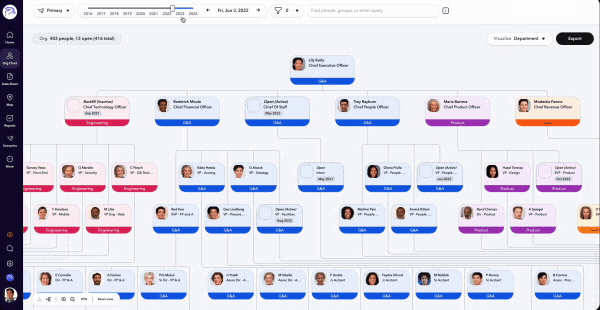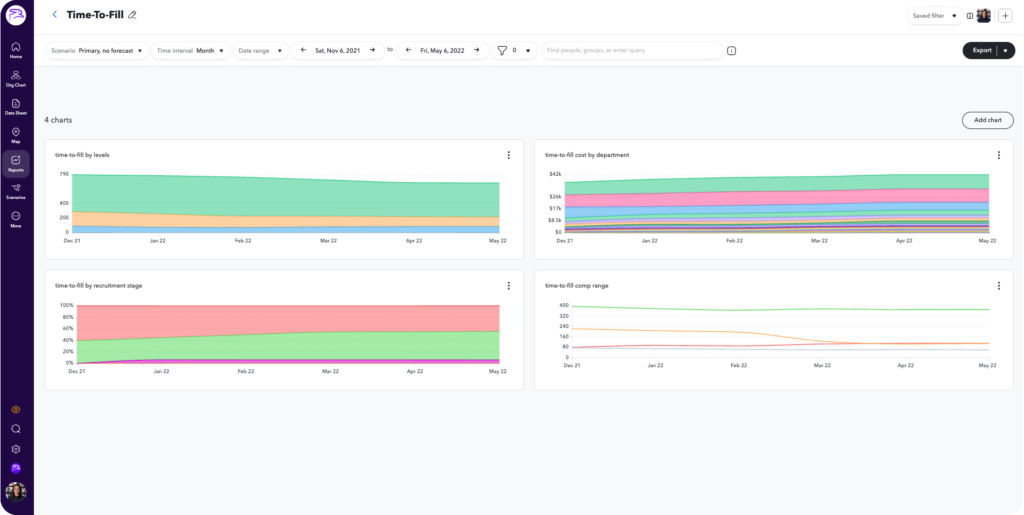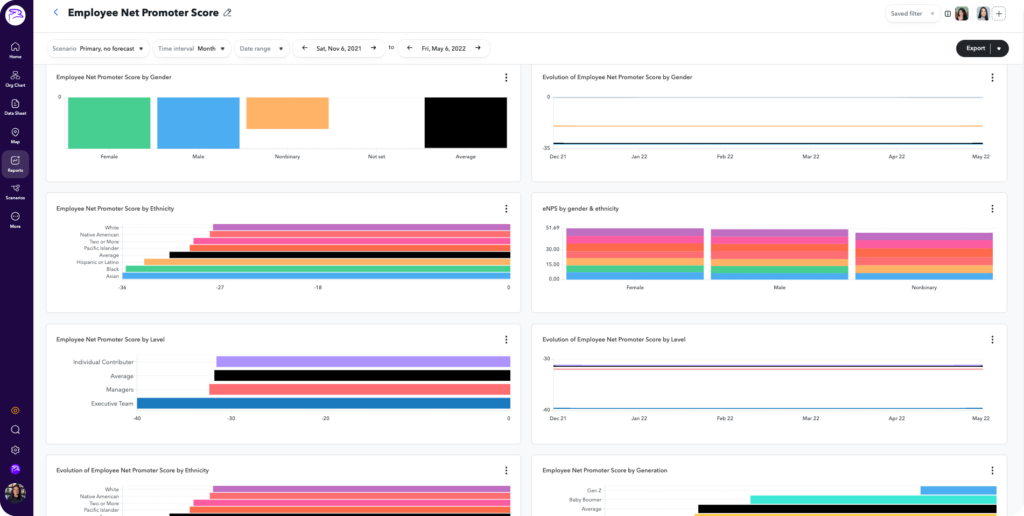
There’s a lot of chatter out there about using people data. And we should know – we’re shouting from the rooftops about the importance of making people-first, data-based decisions.
But there’s different kinds of people data, and the terms are sometimes (incorrectly) used interchangeably. It’s therefore crucial to understand the differences and intentions behind each kind of data so you can use them appropriately to build a stronger organization.
Specifically, let’s take a look at people analytics and talent analytics, and how using them in tandem can help you boost your recruitment, employee experience, and retention strategies.
People analytics – also known as HR analytics – is a collection of your people data throughout the entire employee lifecycle. By accessing these metrics, you can better understand the ins-and-outs of the organization, leading to holistic, data-driven decisions.
Specifically, people analytics provide key cultural indicators around aspects like:
Note that using your HR analytics data isn’t just a yearly task. Instead, people-first leaders analyze their metrics regularly and track reports over time. That way, they can discover trends, pinpoint areas of concern, and celebrate successes.

The right people operations platform allows you to view your org chart and reports throughout time so you can make the best decisions for your people and company. Pairing these insights with analytics for recruitment helps create a cohesive employee experience.
Talent analytics – also known as recruitment analytics – refer to data and analysis around the talent acquisition process. Talent analytics are typically used by People leaders and talent acquisition teams to develop key metrics (such as time to fill, source of hire, and cost per hire) to improve hiring practices.
While your recruitment analytics can certainly lead to powerful insights, the data collection typically stops at the onboarding phase and skips the remaining parts of the employee lifecycle.
While the importance of finding and hiring the right people is undeniable, so is retaining those candidates for the long-haul. While both people and talent analytics serve different functions, they complement each other. You can (and should) use these metrics to elevate recruitment strategies and create a stronger employee experience that fosters long-term success.
The main takeaway is this: your talent analytics focus on best practices to get people in the door, and your people analytics focus on ways to get them to stay.
Because you want to recruit and retain top talent, consider using people analytics and talent analytics together to create a robust people strategy. Check out the three suggestions below on how to get started.
People and talent analytics should be used together to inspire seamless collaboration and fill headcount needs strategically. By using all of your people data, you can plan with context, understanding budgetary and structural implications for headcount changes as they go along.
To ensure you benefit from using both people and talent analytics, you need to:

Using analytics for recruitment, such as the time-to-fill report above, helps talent acquisition teams, managers, and People leaders plan accurately and efficiently.
On their own, recruitment analytics can provide a surface view of talent gaps across the organization. Depending on your technology, recruitment analytics can show what jobs are open, what jobs have been filled, candidacy demographics, and more.
And when paired with people analytics, leaders can take a dive deep into talent gaps using dynamic visualizations, robust reports, and easy-to-read graphs. This goes beyond seeing what roles are missing on certain teams now; it also helps you plan for the future.
There are a number of reasons why you will need to fill talent gaps, including:
We don’t need to tell you that people are a company’s greatest asset. So while it’s important to recruit top talent, it’s arguably more important to keep them.
In conjunction with talent analytics, a people operations platform helps leaders maximize retention strategies across the organization. For example, you can dive deep into HR analytics data surrounding past and current hires, allowing you to slice-and-dice insights based on demographics, performance, and engagement levels. That way, if there are issues with turnover, people analytics can help you look into the “why.”
Such levels of specificity are particularly helpful at the team and department-levels, as you may be able to spot trends within your workforce.
For example, if you see higher-than-average turnover on one of your teams, look to your data to discover:

Analyze reports, such as the eNPS one above, next to your recruitment analytics to help discover any trends when it comes to sourcing, hiring, and onboarding practices.
Whatever the case may be, using people analytics and talent analytics together can help leaders explore trends to get to the bottom of issues and prevent them from occurring in the future. With rich data and insights, you can develop better retention strategies that keep people engaged over their tenure.
Finding the perfect candidate doesn’t happen overnight, nor can it happen without knowing exactly what your organization needs. By using people analytics and talent analytics together, you can better define headcount plans, identify and fill talent gaps, and ensure retention to take one step closer to hiring that perfect candidate and keeping them engaged for the long-haul.
Sign up for a free demo today.